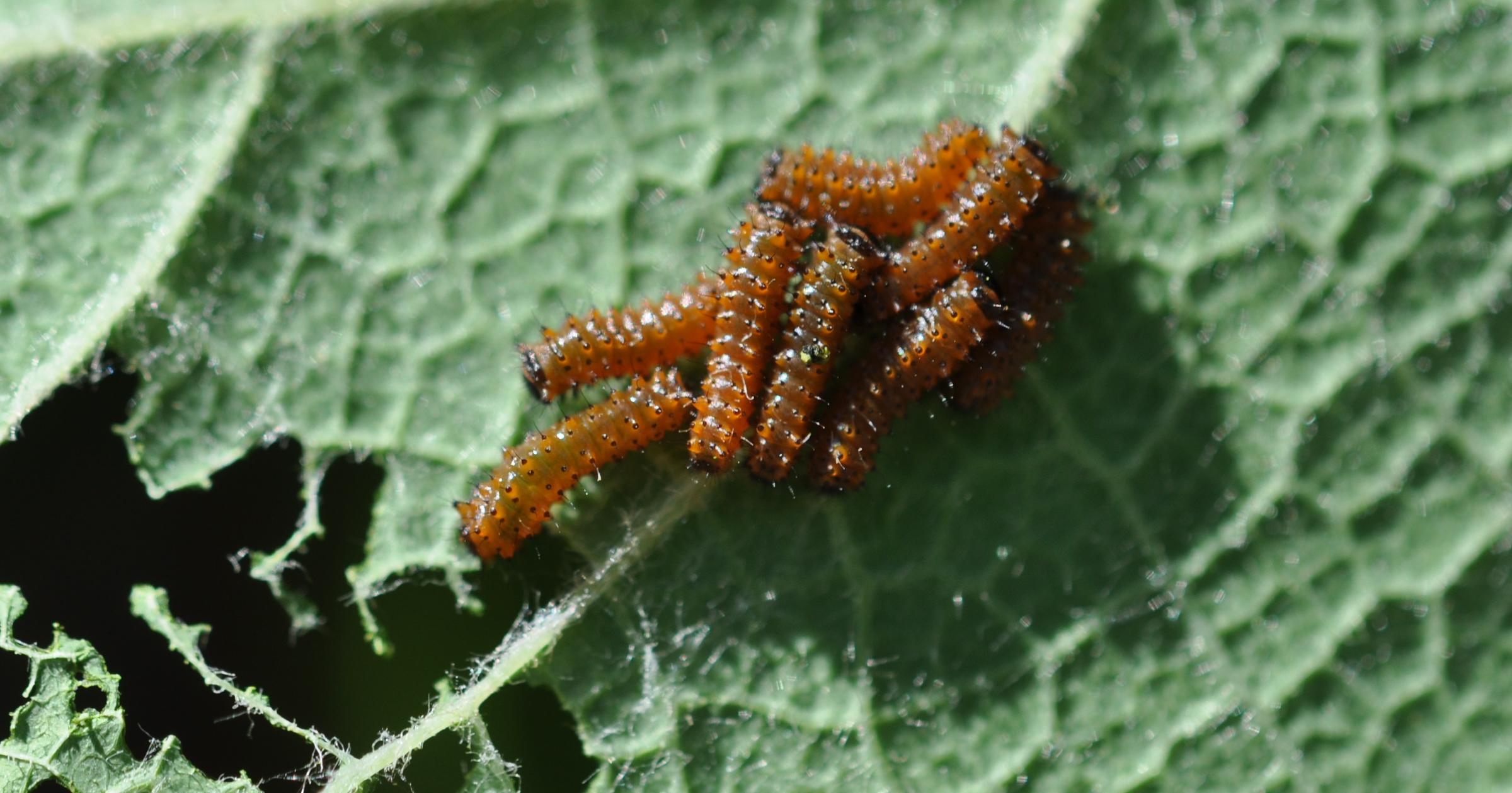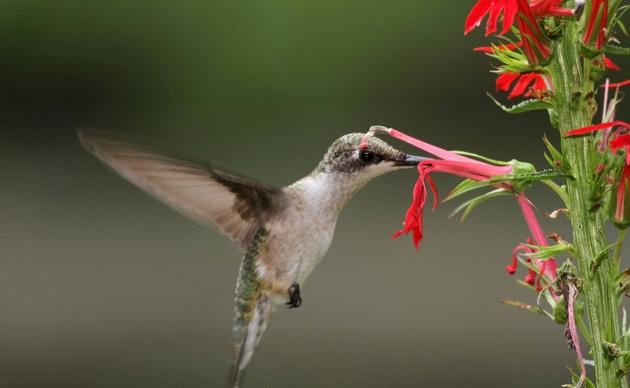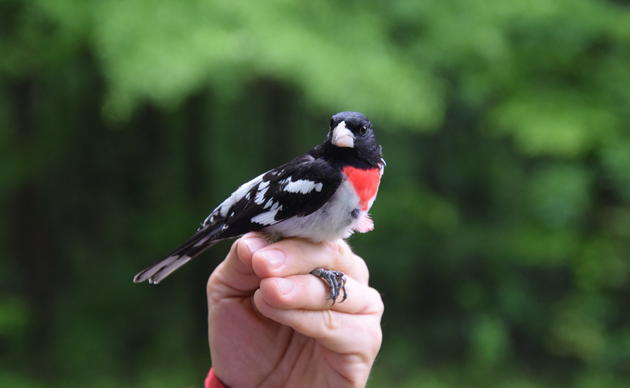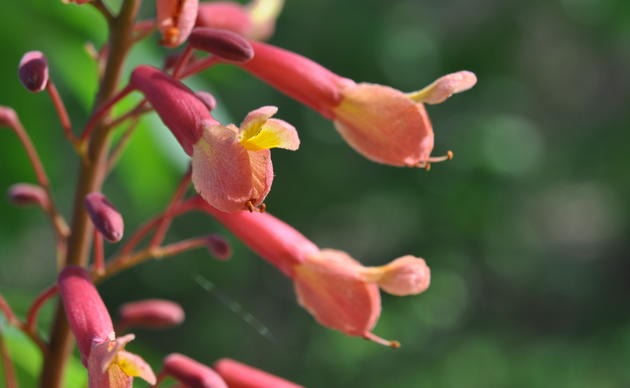North America's insects co-evolved over millenia with our native plants, developing intricate chemical relationships which allow them to use native plants for forage and rearing their young. Plant chemical properties both attract insects or repel them. Dr. Douglas Tallamy has been researching the preferred use of native vs. non-native plant species by insects, finding that native plants support a much greater number of insect species (mainly Lepidoptera, i.e. butterflies and moths) than their foreign plant counterparts.
But why does this matter for birds? Most wildlife depend on native insects as a primary food source, either directly or at higher trophic levels up the food chain. For birds, insects are a particularly important food source during seasonal migrations and when rearing young. Lepidoptera are a critically important to even our most common back yard birds. Through observations of nesting Chickadees, Dr. Tallamy found that one mating pair will feed will feed their nestinglings 6,000-9,000 caterpillars from 6 a.m. until 8 p.m. for each of the 16 to 18 days it takes the chicks to fledge. That’s a total of 350 to 570 caterpillars every day, depending on the number of chicks.
Download the resources below for futher information on native plants and their importance to the web of life.
Gardening for Life, by Doug Tallamy
Woody Species, by Genus: Host Plants for Lepidoptera (butterflies and moths)
A Call for Backyard Biodiversity, by Doug Tallamy
Children & Nature Network: Children’s Nature Deficit: What We Know – and Don’t Know
Children & Nature Network: Health Benefits to Children from Contact with the Outdoors & Nature
Native Shrubs for MS Landscapes
Native Trees for MS Landscapes
Landscaping with Native Plants in Western TN
Identifying Oak Trees Native to TN
How you can help, right now
Join Our Flock
Help us promote wildlife diversity and inspire people to take conservation action. Come learn about using native plants around your home or best management practices for your land.
Support Our Community Conservation
Where Birds Thrive, People Prosper.
Help support our work through automatic monthly donations.
Creating Bird-Friendly Communities
Working with our local communities to enhance landscapes for birds and other wildlife.





